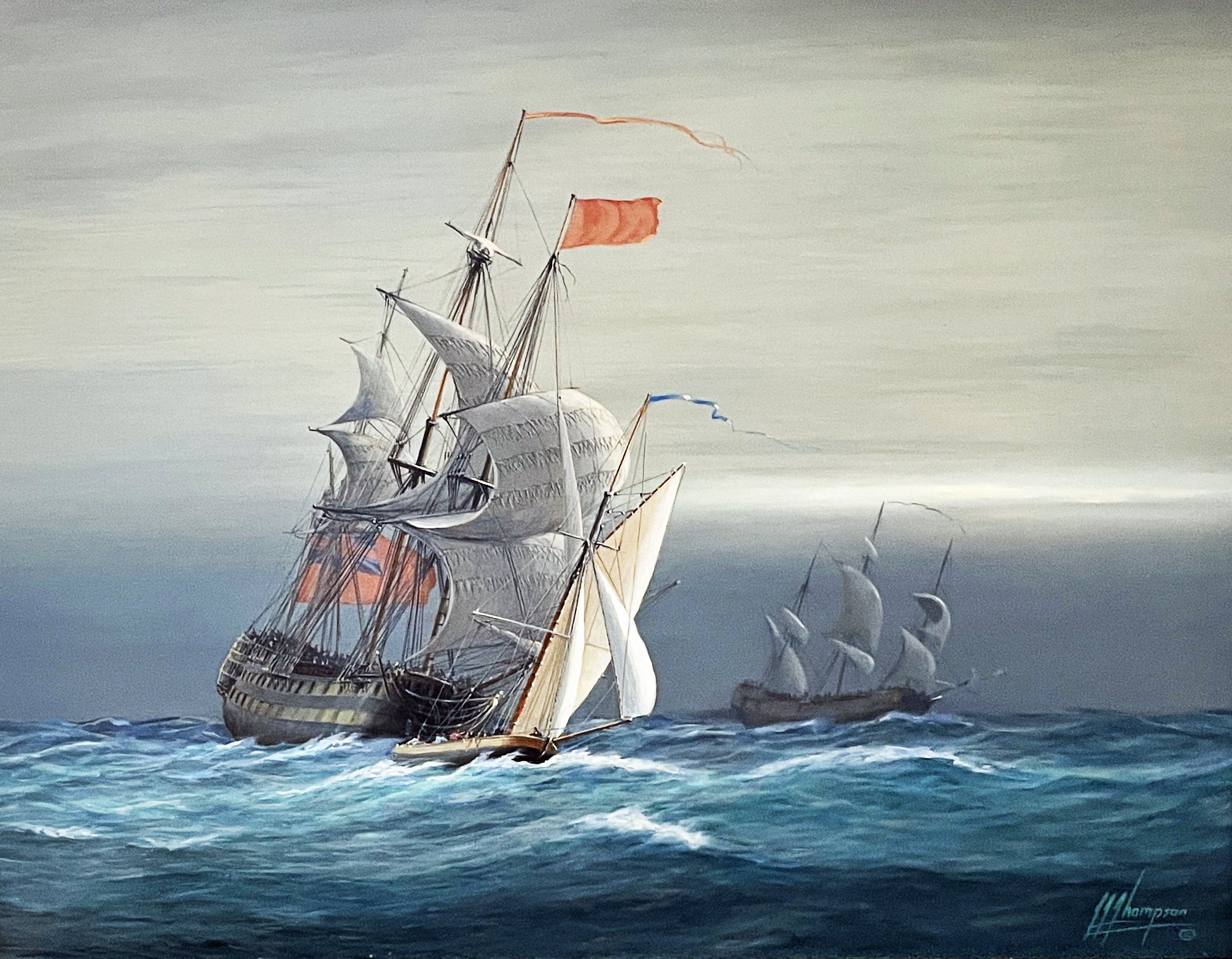Royal Navy Underway, Ships of the Red Squadron
12” x 15 ½” oil on panel
$9,500
The Colored Squadrons of the Royal Navy were first introduced in the Tudor Period during the reign of Queen Elizabeth I of England (1558–1603). The purpose was to separate the English fleet into three squadrons for better command and control, though in 1596 there were four squadrons. In 1620 as the fleet was expanding the system was changed to include three squadrons but also three sub divisions. Assigned to each of these squadrons were flag officers who were separated in terms of their seniority by the use of colored flags: in effect the squadrons provided a system of designating the nine or ten most senior admirals of the Royal Navy until the system was abolished in 1864.
In 1805, after the battle of Trafalgar, the rank of Admiral of the Red was introduced. It became the highest rank that an Admiral could attain until 1862, when an allowance was made for more than one Admiral of the Fleet to be appointed. In 1864 the color squadron organization was abolished and the Royal Navy adopted the White Ensign of the former White Squadron. The Red Ensign of the Red Squadron became the ensign of the British Merchant Navy, and the Blue Ensign of the Blue Squadron became the ensign of the Auxiliary Fleet.
Squadrons and divisions continued to be used as system of managing large formations when the British navy consisted of more than one fleet for most of the twentieth century until 1971.

